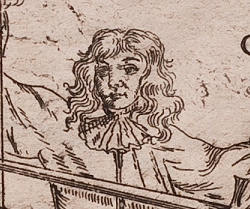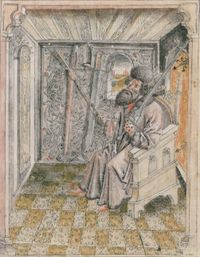|
|
You are not currently logged in. Are you accessing the unsecure (http) portal? Click here to switch to the secure portal. |
Difference between revisions of "Theodori Verolini"
| Line 47: | Line 47: | ||
{{master begin | {{master begin | ||
| − | | title = | + | | title = Long Sword |
| width = 84em | | width = 84em | ||
}} | }} | ||
| Line 65: | Line 65: | ||
{{master begin | {{master begin | ||
| − | | title = | + | | title = Dussack |
| width = 84em | | width = 84em | ||
}} | }} | ||
| Line 83: | Line 83: | ||
{{master begin | {{master begin | ||
| − | | title = | + | | title = Rapier |
| width = 84em | | width = 84em | ||
}} | }} | ||
Revision as of 19:31, 12 May 2017
| Theodori Verolini | |
|---|---|
 | |
| Born | 17th century |
| Died | after 1679 |
| Occupation | Fencing master |
| Movement | Freifechter |
| Influences | |
| Genres | Fencing manual |
| Language | New High German |
| Notable work(s) | Der Kůnstliche Fechter (1679) |
Theodori Verolini (Theodorus Verolinus) was a 17th century German Freifechter. Little is known about this master's life, but in 1679, he published a fencing manual entitled Der Kůnstliche Fechter ("The Artful Fencer"), a brief overview of the teachings of Joachim Meÿer, possibly via Jakob Sutor von Baden, in addition to the complete grappling teachings of Nicolaes Petter (uncredited in both cases).
Contents
Treatise
Images |
Transcription | |
|---|---|---|
| Translation | Transcription |
Images |
Transcription | |
|---|---|---|
| Translation | Transcription |
Images |
Transcription | |
|---|---|---|
| Translation | Transcription |
For further information, including transcription and translation notes, see the discussion page.
| Work | Author(s) | Source | License |
|---|---|---|---|
| Images | Herzog August Bibliothek | HROARR: A B C D | |
| Translation | |||
| Transcription | András Berki | Historical European Martial Arts Coalition |
Additional Transcription Notes: The following document is a digital version of the transcription or translation of an existing historical document or manuscript. It is provided in a Portable Document Format (PDF) for the purpose of making it freely available to the public.
Feel free to redistribute unaltered copies of this document via electronic means. You may not, however, alter the document without permission nor profit from its redistribution.
For further information visit the following link:

